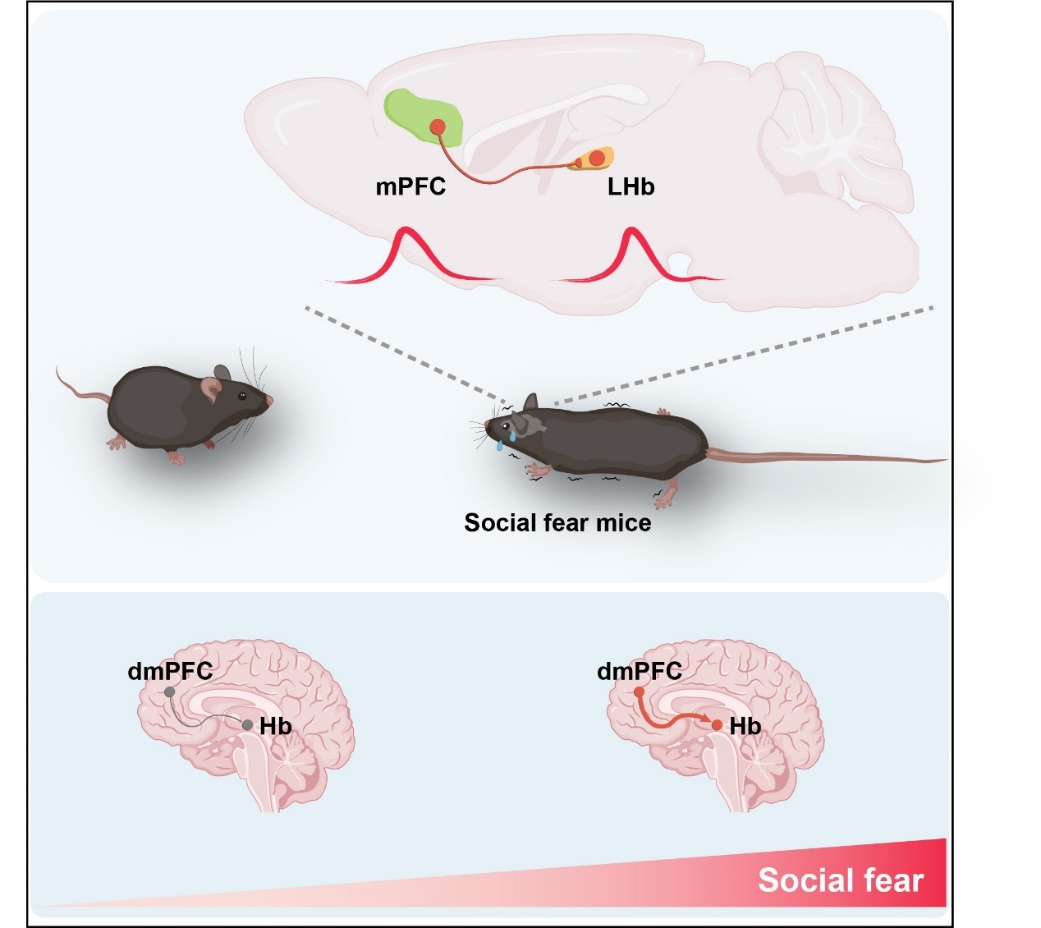The research team led by Professors Han Xu and Yuzheng Hu published an article titled “A Prefrontal-Habenular Circuitry Regulates Social Fear Behavior” in Brain on July 4, 2024. This study elucidates the critical role of the prefrontal-habenular circuitry in modulating social fear.
Social behaviors are vital for survival and reproduction across species, evolving dynamically based on social experiences. Clinically, intense social fear is a prevalent symptom in various mental disorders, highlighting the urgency of understanding how negative social experiences alter brain structure and function, leading to social fear behaviors. Research has demonstrated that the medial prefrontal cortex (mPFC) plays a key role in social behaviors, and its dysfunction is linked to social deficits. A prior study by this team emphasized the prefrontal cortex’s involvement in social fear behavior. However, the exact subcortical partners involved remained unclear. Among the downstream brain regions of the mPFC, the lateral habenula, recognized as an “anti-reward” center, directly influences negative emotions. Nonetheless, the precise role of the prefrontal-habenular pathway in regulating social fear behavior was yet unknown.
To investigate this, the researchers used social fear conditioning and social defeat paradigms to induce social fear behaviors in mice. Initially, they recorded neural activity in the prefrontal cortex-lateral habenula pathway using fiber photometry. They observed a significant increase in neural activity in prefrontal cortex neurons projecting to the lateral habenula, which synchronized with the activity of lateral habenula neurons during social fear expression. Furthermore, they demonstrated that optogenetic inhibition of abnormal activity in this pathway significantly reduced social fear behaviors in mice. Extending their research to humans, they employed resting-state functional magnetic resonance imaging (fMRI) and identified a significant positive correlation between social anxiety scale scores and the strength of functional connectivity between the prefrontal cortex and the habenula. These results suggest that, consistent with findings in mouse models, structural and functional abnormalities in this pathway may also be present in patients with social anxiety.

This study is the first to demonstrate the crucial role of the prefrontal cortex-lateral habenula pathway in regulating social anxiety behavior through cross-species research. It offers significant insights into the mechanisms underlying social fear and supports the development of targeted interventions for patients with social anxiety.




 Location :
Location : 

